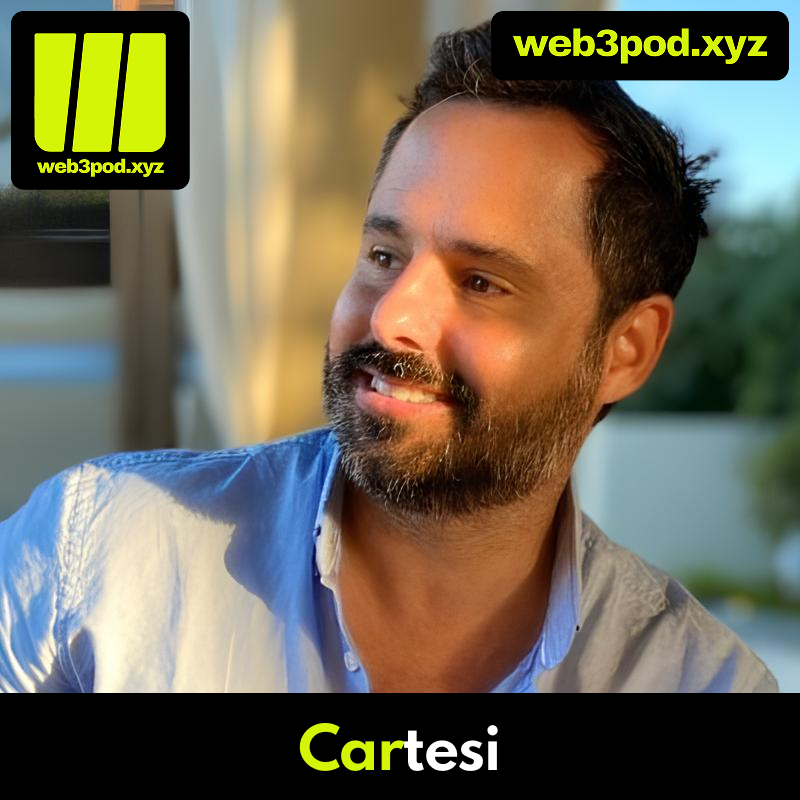The Challenges and Future of Ethereum Scaling

Introduction
Hello explorers, innovators, and risk-takers! Welcome to another episode of the Web3 with Sam Kamani podcast. I'm your host, Sam Kamani. In today's episode, we dive deep into the world of Ethereum scaling with Misha Komarov, founder of NIL Foundation. We explore the challenges of Layer 2 (L2) solutions, the state of blockchain technology, and the future of Ethereum (ETH). If you're into the real tech behind blockchains, this episode is for you.
The Controversy of L2 Solutions
One of the most debated topics in the Ethereum community is the effectiveness of L2 solutions in scaling the network. The general consensus is that L2 solutions will solve Ethereum’s scalability issues. However, Misha presents a controversial opinion: L2 solutions might actually make things worse.
Fragmentation of Liquidity
Before the advent of numerous L2s, Ethereum had a consolidated liquidity pool, which made it suitable for various applications, especially decentralized finance (DeFi). However, the introduction of rollups has fragmented this liquidity, causing significant challenges. Each rollup operates independently, leading to isolated liquidity pools that can’t interact seamlessly with each other or with Ethereum’s main chain. This fragmentation makes it difficult to leverage the liquidity effectively, regardless of the transaction speed of individual rollups.
Rollup Throughput and Bottlenecks
Rollups themselves face significant scalability issues. For zero-knowledge (ZK) rollups, the bottleneck lies in the ZKVM proving capacity. There is a limit to how many transactions can be processed securely per second. For optimistic rollups, the bottleneck is data availability (DA). These limitations mean that rollups cannot infinitely scale Ethereum’s transaction throughput.
The Real Solution: ZK Sharding
Misha suggests an alternative approach: ZK sharding. This method aims to upgrade Ethereum with sharding capabilities without the need for extensive protocol upgrades. ZK sharding uses a database management system (DBMS) approach to create a scalable, composable execution layer that maintains the security and integrity of the Ethereum network.
Benefits of ZK Sharding
- Horizontal Scalability: ZK sharding allows Ethereum to scale horizontally, meaning it can add more shards (like adding more lanes to a highway) to increase throughput.
- Composability: It maintains composability, allowing different shards and rollups to interact seamlessly.
- Low Transaction Fees: By distributing the load across multiple shards, transaction fees can be reduced.
Complexity and Implementation
While ZK sharding offers numerous benefits, it comes with its own set of challenges, primarily the complexity of implementation. Developing and maintaining such a system requires sophisticated technology and a deep understanding of both cryptography and blockchain architecture.
The Broader Perspective
The conversation also touches on the broader state of the crypto industry. Despite its rapid growth, the crypto ecosystem remains relatively small compared to traditional tech industries. For instance, Ethereum has about 1 million monthly active users, whereas a single app like Duolingo has 74 million.
The Isolation of Crypto
One reason for this disparity is that many non-crypto apps don't see the immediate benefit of integrating crypto features. The complexity and the perceived risk of integrating decentralized technologies deter many potential adopters. Moreover, the crypto community often struggles with communication and collaboration with larger, established tech companies.
In conclusion, while L2 solutions have been the focus of Ethereum scaling discussions, they are not a panacea. The fragmentation of liquidity and throughput bottlenecks present significant challenges. ZK sharding offers a promising alternative, but its complexity must be addressed. For the crypto industry to grow and integrate more widely, it must also overcome its isolation and improve collaboration with the traditional tech sector.
If you enjoyed this deep dive into Ethereum scaling, please share this episode on your social media. And remember, nothing in this episode should be taken as investment advice. Stay tuned for more insights on the Web3 with Sam Kamani podcast.
Connect with Us
You can connect with me, Sam Kamani, on social media or reach out directly. My DMs are open, and I’m always eager to engage with fellow innovators.
This episode covered the exciting development in the world of Web3. You can listen to it here .
Stay tuned for more episodes where we dive into the world of Web3. Thank you for your support and best of luck in building your startups and projects.




